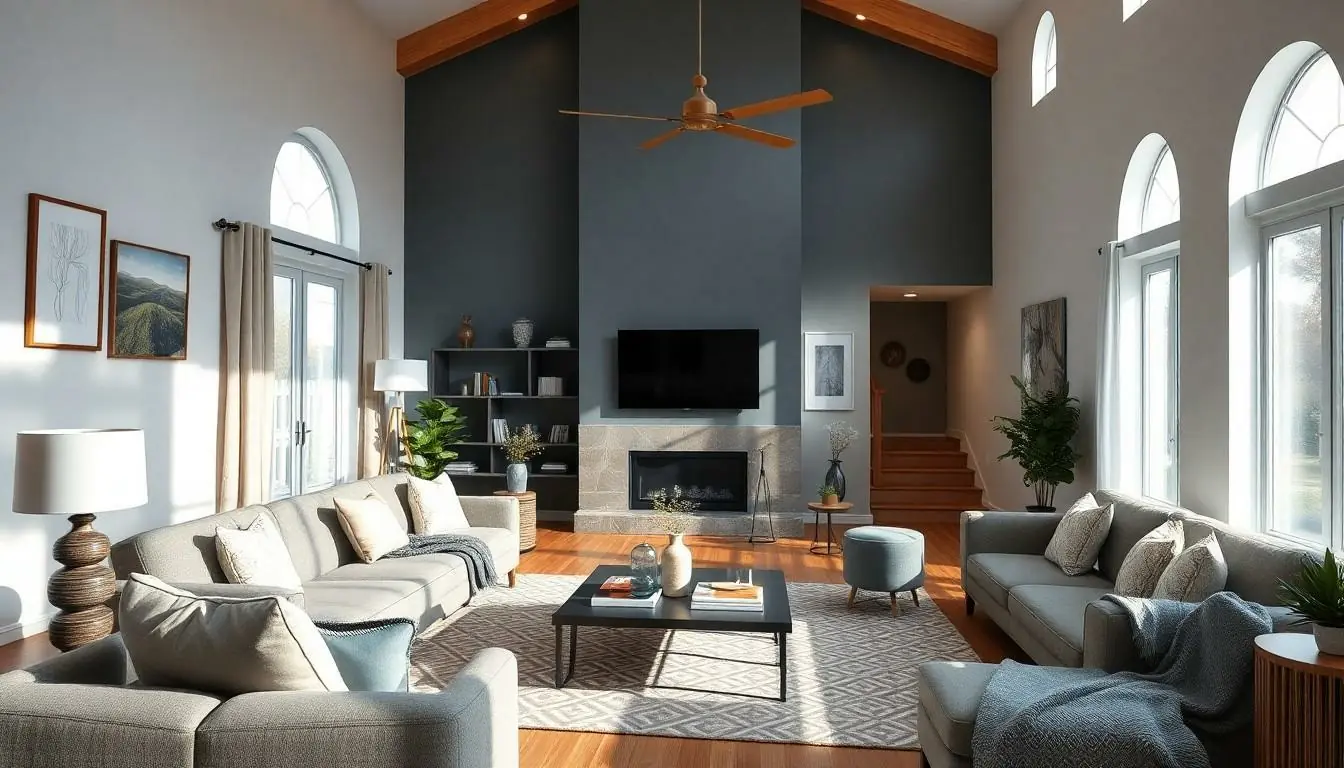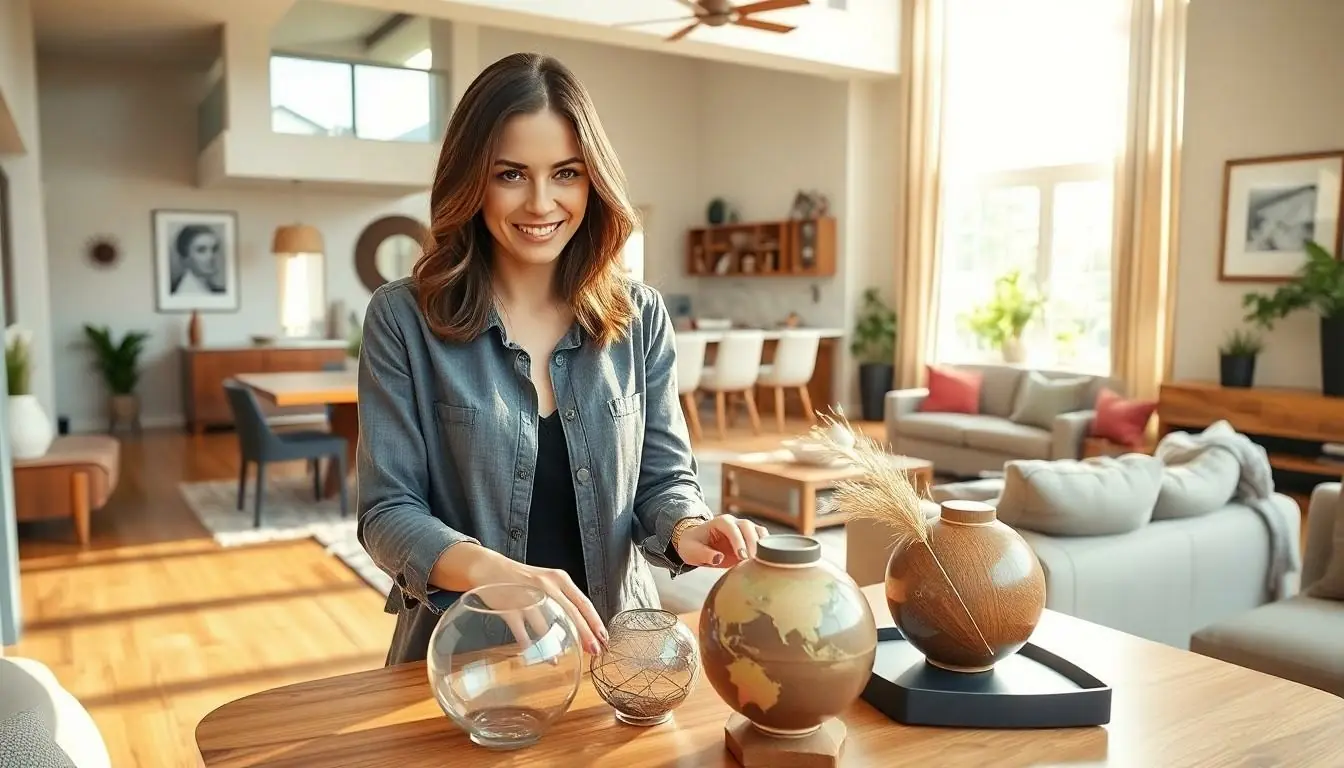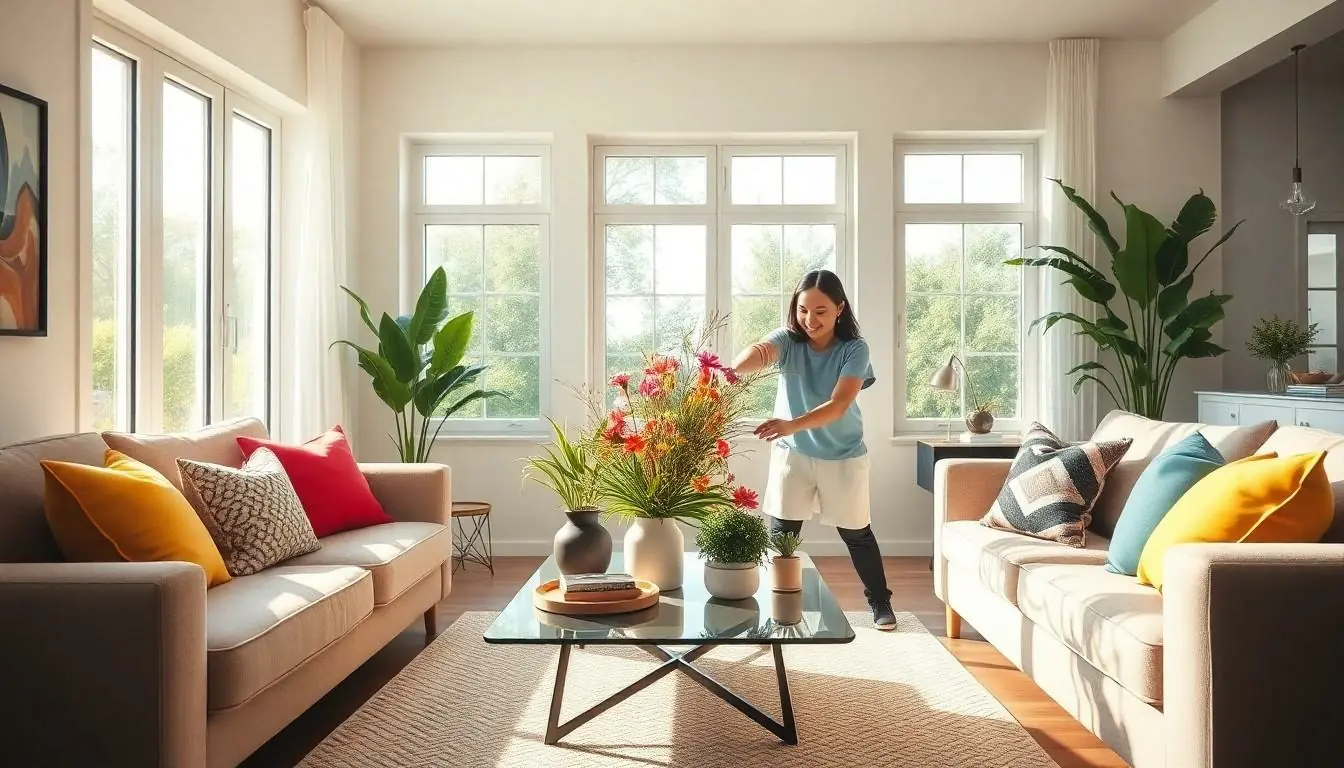Decorating a split-level home might seem like a puzzle with a few missing pieces, but it can actually be a fun adventure. These unique layouts offer a playground for creativity, allowing homeowners to blend style and functionality like never before. With a little flair and some clever tricks, those awkward transitions and varying floor heights can transform from challenges into charming features.
Table of Contents
ToggleUnderstanding Split Level Homes
Split-level homes feature staggered floor levels, creating a distinct layout that differentiates them from traditional single-story designs. This unique arrangement often leads to creatively utilizing space, making these homes intriguing for decorators.
Definition and Characteristics
A split-level home typically comprises multiple levels with short flights of stairs between them. This design allows for a seamless flow between living spaces. Key characteristics include open floor plans, varying ceiling heights, and an integration of indoor and outdoor environments. These homes often emphasize distinct areas for living, dining, and sleeping while maintaining a cohesive aesthetic.
Types of Split Level Designs
Several popular types of split-level designs exist, each offering unique layouts and appeal. The classic split-level features three levels, including a raised living area, lower family room, and basement. Another variation, the tri-level, incorporates three distinct tiers, usually combining living and sleeping areas into one cohesive unit. The four-level split introduces additional floor space and complexity, often accommodating larger families. Each design allows for creative decorating opportunities while leveraging the home’s unique architectural elements.
Challenges in Decorating a Split Level Home

Decorating a split-level home can present unique challenges. Homeowners often confront layout complexities due to staggered floor heights and transitions between levels.
Navigating Different Levels
Navigating stairs becomes essential when decorating split-level homes. Transitioning between varying levels can cause visual breaks. Each level typically serves a distinct purpose, which might affect furniture placement and style. An understanding of how to utilize these transitions effectively will enhance flow between spaces. Smart furniture arrangements minimize disruption while creating comfortable environments. Identifying focal points on each level can maintain interest.
Creating Visual Cohesion
Creating visual cohesion in split-level homes poses another challenge. Differing ceiling heights may split spaces, making them feel disjointed. Choosing a unified color palette can harmonize these areas and create an inviting atmosphere. Incorporating similar materials and textures throughout the home promotes a sense of continuity. A consistent style thread, whether through artwork or decor pieces, further enhances cohesion. Balancing light and dark elements also contributes to a unified look across levels.
Tips for Successful Decorating
Successful decorating in a split-level home hinges on strategic choices that enhance its unique layout. Homeowners can create a cohesive and inviting atmosphere through thoughtful design.
Choosing a Unified Color Palette
A unified color palette unifies spaces and enhances flow. Selecting three to five complementary colors for walls, furnishings, and decor creates visual harmony. Use lighter hues for smaller areas to evoke openness, while deeper tones can define specific zones. Incorporating consistent accent colors in different areas builds cohesion. For example, a soft blue can grace the living room, while the same shade appears in decorative pillows on adjacent levels. Overall, maintaining a balance between contrasting shades promotes an engaging yet unified aesthetic across the home.
Selecting the Right Furniture
Selecting the right furniture can transform split-level spaces into functional areas. Choose pieces that prioritize scale and proportion to avoid overwhelming lower ceilings. For living areas, opt for low-profile sofas and chairs to maintain visual balance. Utilizing multi-functional furniture, like storage ottomans or nesting tables, maximizes usability across varying levels. Arranging furniture to encourage conversation paths creates a welcoming feel. For instance, positioning seating towards each other enhances connection in the living room. Prioritize versatile styles that complement the overall decor, ensuring cohesive design throughout the home.
Room-Specific Decorating Ideas
Decorating split-level homes requires tailored strategies for each room to enhance the unique layout. Below are specific ideas for various spaces.
Living Room Design
In a split-level home, the living room often serves as a central gathering space. Choose a color palette that flows with adjacent areas, maintaining visual cohesion. Use area rugs to define zones within the open layout. Furniture should be arranged to encourage conversation while accommodating varying ceiling heights. Incorporate lighting that highlights architectural elements, such as beams or raised areas, enhancing character. Potted plants can bring life and color, softening angular lines.
Kitchen and Dining Area
For the kitchen and dining area, maximizing space becomes crucial. Opt for open shelving to create a sense of airiness while showcasing decorative dishes. Prioritize multi-functional furniture, like extendable dining tables, to accommodate gatherings. Bright, reflective surfaces can enhance light in these spaces, making them feel larger. Adding pendant lighting above the dining table draws attention and creates a cozy atmosphere. Include barstools at kitchen islands for casual dining options.
Bedrooms and Bathrooms
Bedrooms should create a restful sanctuary amidst the split-level design. Select calming color schemes to enhance relaxation, navigating transitions with cohesive decor styles. Utilize built-in storage solutions to minimize clutter, maintaining an open feel. In bathrooms, focus on maximizing light with mirrors and light fixtures that draw the eye upward. Incorporate textured materials, such as bamboo or stone, to add warmth and interest. Personal touches, such as artwork and well-placed accessories, can express personal style beautifully.
Decorating a split-level home offers a unique opportunity to showcase creativity and style. By embracing the home’s architectural features and understanding its layout, homeowners can transform challenges into stunning design elements.
Thoughtful arrangements and a cohesive color palette can create a seamless flow between levels while enhancing the inviting atmosphere. With the right furniture choices and room-specific strategies, each space can reflect personal taste and functionality.
Ultimately, the key to a beautifully decorated split-level home lies in balancing visual appeal with practical living, ensuring every corner feels harmonious and welcoming.



